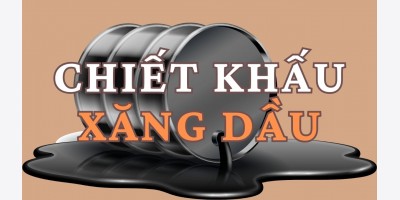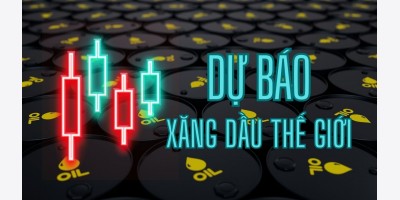Dầu tăng ở
Dầu tăng lần đầu trong 4 ngày khi Ä‘ôla giảm so vá»›i euro, đẩy mạnh sức mua hàng hóa nhÆ° má»™t dạng đầu tÆ° thay thế. Hy Lạp được cho vay 45 triệu euro ($61 tỉ) vá»›i mức lãi suất thấp hÆ¡n thị trÆ°á»ng để kết thúc cuá»™c khủng hoảng tài chính của mình. Trung Quốc tăng nháºp khẩu dầu thô tháng 3 khoảng 29% so vá»›i 1 năm trÆ°á»›c Ä‘ó.
Má»™t nhà phân tích nghiên cứu tại CWA Global Markets Pty Sydney cho biết: “Trung Quốc Ä‘óng vai trò then chốt trong việc thay đổi nhu cầu hàng hóa toàn cầu, trong Ä‘ó có dầu thô. Kế hoạch giải cứu Hy Lạp sẽ xoay chuyển thị trÆ°á»ng hôm nay, giải quyết nhiá»u Ä‘iá»u không chắc chắn. Äồng Ä‘ôla yếu là yếu tố há»— trợ cho giá dầu.”
Dầu thô cho đợt hàng tháng 5 tăng 79 cent, hay 0.9% thành $85.71/thùng và ở mức $85.56 trên giao dịch Ä‘iện tá» New York Mercantile Exchange lúc 9:28 sáng giá» Sydney. Hợp đồng giảm 47 cent hay 0.6% còn $84.92 vào ngày 9/4.
Äôla giao dịch mức $1.3635 cho 1 euro lúc 9:00 sáng giá»
Nháºp khẩu dầu thô của Trung Quốc đạt 21.1 triệu mét tấn, khoảng 4.98 triệu thùng/ngày, theo dữ liệu của General Administration of Customs ngày 10/4.
Dầu thô Brent cho đợt hàng tháng 5 tăng 60 cent hay 0.7 % thành $85.43/thùng trên giao dịch ICE Futures Europe tại London lúc 8:24 sáng giá» Sydney. Hợp đồng tăng 2 cent để chốt phiên tại mức $84.83 ngày 9/4.
Oil Rises After Dollar Weakens, China Increases Crude Imports
Oil rose for the first time in four days as the dollar fell and the euro gained after European governments offered debt-burdened Greece a rescue package and China increased crude imports to meet surging demand.
Oil advanced as the weaker dollar bolstered the appeal of commodities as an alternative investment. Greece was offered as much as 45 billion euros ($61 billion) at below-market interest rates to end its fiscal crisis. China increased March crude oil imports by 29 percent from a year earlier, according to customs data released April 10.
“China is playing a key role in underpinning global demand for commodities, including crude,” said Toby Hassall, a research analyst at CWA Global Markets Pty in Sydney. “The Greek rescue plan, which is going to be driving the markets today, resolves a lot of the uncertainty. A weaker dollar is a supportive element for oil prices.”
Crude oil for May delivery gained as much as 79 cents, or 0.9 percent, to $85.71 a barrel and was at $85.56 in electronic trading on the New York Mercantile Exchange at 8:44 a.m. Singapore time. The contract dropped 47 cents, or 0.6 percent, to $84.92 on April 9.
Crude imports by China reached 21.1 million metric tons, or about 4.98 million barrels a day, preliminary data released by the General Administration of Customs showed. Net imports reached 20.8 million tons, second only to December’s record 20.9 million tons.
“China is continuing to grow at a strong rate,” CWA’s Hassall said.
Weaker Dollar
Forced into action by a surge in Greek borrowing costs to an 11-year high, euro-region finance ministers said yesterday they would offer as much as 30 billion euros in three-year loans in 2010 at around 5 percent. That’s less than the current three- year Greek bond yield of 6.98 percent. Another 15 billion euros would come from the International Monetary Fund.
The dollar traded at $1.3637 per euro at 10:25 a.m. Sydney time, down from $1.3500 on April 9.
U.S. stockpiles of crude oil rose 1.98 million barrels to 356.2 million, leaving supplies 7.1 percent above the five-year average for the period, according to an Energy Department report on April 7. Total U.S. fuel consumption slipped 0.6 percent to 18.9 million barrels a day, the report showed.
“We’re still not seeing a tight market there in the U.S., but the macro data that we’ve seen certainly suggests a recovery is in place,” CWA’s Hassall said. “It looks like it will be a slow recovery.”
Brent crude oil for May settlement gained as much as 75 cents, or 0.9 percent, to $85.58 a barrel on the London-based ICE Futures Europe exchange, and was at $85.51 at 8:54 a.m. Singapore time. The contract rose 2 cents to end the session at $84.83 on April 9.









